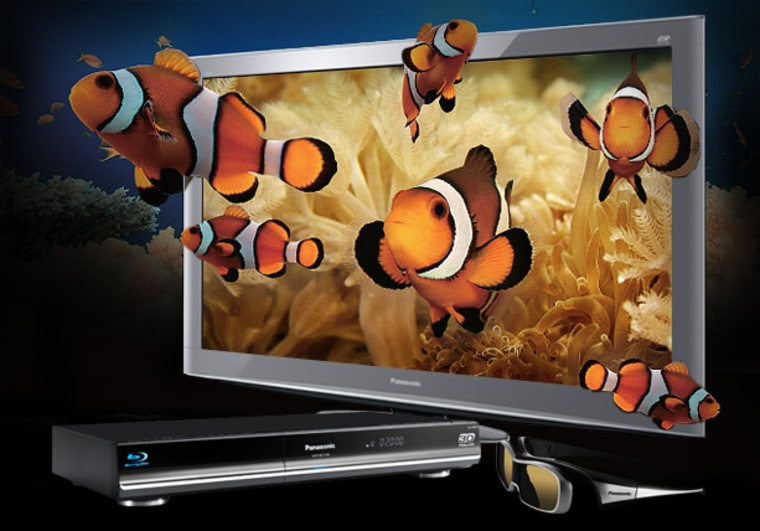I love to say "I told you so," but this one was so super obvious it doesn't even feel good: 3-D isn't a big motivator for HDTV buyers.
Despite a dramatic rise in sales of 3-D HDTVs, only 14 percent of consumers interested in, or expecting to purchase, a flat-panel TV in the next 6 months call 3-D a “must have” feature, according to the NPD Group.
Here's the thing: HDTVs are awesome, and the technology that gives a TV the power to show 3-D imagery only makes a TV's picture more awesome (as we discussed in the video below). It's just that actual 3-D viewing will remain a limited attraction due to gear requirements — special glasses, Blu-ray players and cable service add-ons — a generally underwhelming lineup of 3-D movies and, let's face it, no clear reason why we need to see things in 3-D in the first place.
"I'm not ready to call 3-D a gimmick," said Ben Arnold, director of industry analysis for the NPD Group, in a phone interview. "But how much it adds to the viewing experience is debatable."
What about smart TV?
Explicit demand for Internet connectivity is not currently much greater than demand for 3-D. According to a separate 2011 survey by NPD Consumer Tracker, connectivity was cited as "important" in about 20 percent of TV purchases. But the perceived need for an Internet-enabled TV is likely to rise.
"Anything that expands content options has more of a future than something that's simply a feature," Arnold told me. Besides, connectivity doesn't necessarily come with the same kind of baggage 3-D requires. "You don't have to buy glasses, you don't have to have special content from your TV provider," said Arnold. "The cost of entry is much lower than it is for 3-D, I suppose."
My contention, one that Arnold agrees with, is that we're only at the beginning of the smart TV revolution. Meanwhile, this whole 3-D may well just blow over.
Try to remember smartphones before the iPhone. Think back hard. Interfaces were clunky, functionality was limited, we weren't totally sure what to do with these things, but we knew they were "better" than our old dumbphones.
That's essentially the current state of connected TV: Top hardware companies that have no track record for designing user interfaces are pushing out TVs that make sense on paper, but in the living room fall flat. (And not "flat" in a good way.)
"There's a lot of fragmentation in connected TVs," Arnold told me, "but if iOS or Android comes along on three or four manufacturer's TVs, then you have the next step in that industry's evolution." Is this all a precursor to an iOS-powered Apple iTV? Perhaps a worthy Android competitor to it? The rise of truly great smart TVs is far more likely than smart TVs merely fading back into the woodwork — as I imagine 3-D soon will.
In the meantime, connected, 3-D capable TVs are selling like mad, even if the people buying them don't buy them for either.
"Sales of 3-D TVs are on the rise in the U.S.," reports the NPD Group's Retail Tracking Service. "3-D TVs accounted for 11 percent of all flat-panel TV sales in Q1, nearly double that of last year, and 22 percent of all 40+ inch sets sold were 3-D."
Get 'em while they're hot!
Catch up with Wilson on Twitter at @wjrothman, or on Google+. And join our conversation on Facebook.
